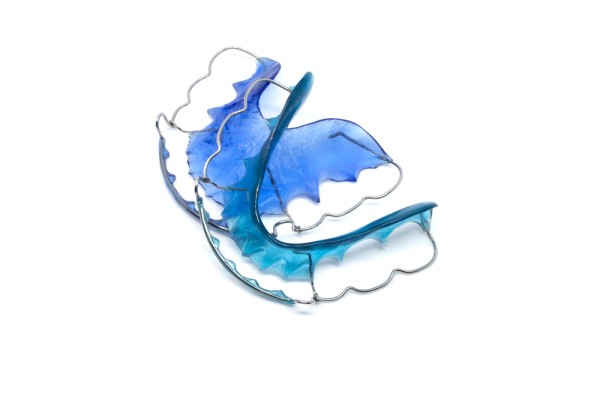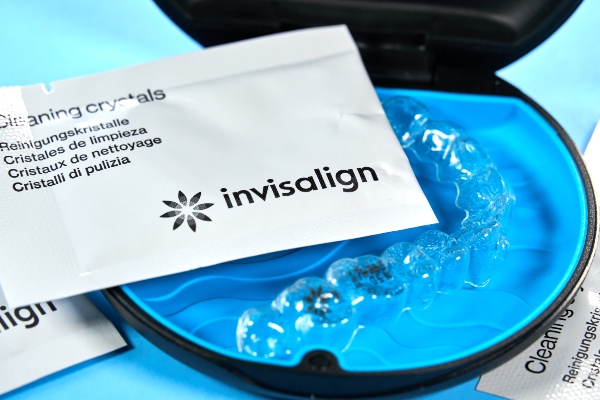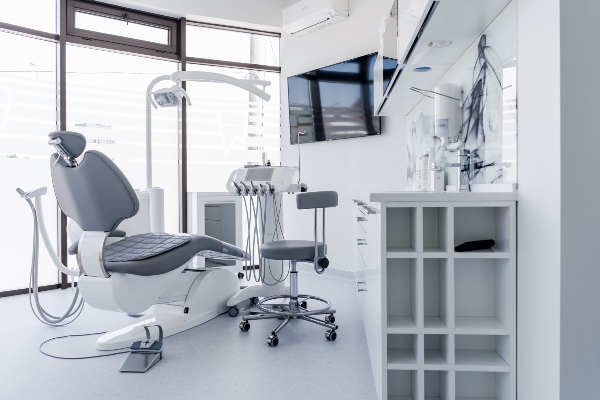Why Wearing Retainers After Teeth Straightening is so Important

If you have braces and are about to get them removed, be prepared to receive a retainer. There is one thing about retainers that you need to know is that they are going to be in your life for a while. Retainers are the best way to ensure the newly straightened teeth stay aligned after treatment. If you do not wear retainers after teeth straightening, your teeth will likely move out of place over time. Keep reading to learn more about why wearing retainers after teeth straightening is necessary.
Why Wearing Retainers After Teeth Straightening is so Important
After a patient completes their teeth straightening orthodontic treatment, they will need to wear a retainer for a certain period of time, depending on the severity of their case. It is a common misconception that wearing a retainer after a straightening treatment, such as braces, is optional. It is not. Using retainers is a form of retention therapy that patient need for long-term success.
What are the three types of retainers?
A retainer is an orthodontic appliance that comes in three forms: Hawley (traditional), Essix, and Bonded. They are custom-made plastic device that fits over individual teeth. They are shaped to fit the arch length of the patient's teeth.
Hawley retainer
The Hawley retainer is a traditional and removable orthodontic appliance used to protect the patient's teeth from a dental relapse. It consists of two parts: a metal wire or plastic strip across the upper and lower arches. This part holds the teeth in place and gives them support, so they do not move out of their newly straightened position again. The second part is a rubber band around the patient's upper molars. This part keeps the jaw closed so the patient cannot open it too far when they perform certain activities such as yawning or chewing food.
Patients should wear this type of retainer for at least 22 hours of the day, only removing it to eat or brush and floss their teeth. Eventually, the orthodontist will advise the patient only to wear the appliance at night.
Essix retainer
The Essix retainer is a clear, removable appliance made of a thermoplastic material. It is custom fitted to the patient's teeth by a method called a hot bath. It has two removable attachments that allow the patient to eat easily and clean their teeth. Most patients find the Essix retainer easier to handle than others because, in addition to being more aesthetically pleasing, the patient will not need extra wires or intricate attachments removed. This type of retainer is strong and durable, allowing patients to use them for years without any issues. However, they do not last forever, so patients will eventually need to request another, assuming no damage is caused before general wear and tear.
Bonded retainer
The bonded retainer, also called a fixed retainer, is a custom-made tooth-colored acrylic resin (plastic) or metal appliance that fits over the patient's teeth. It is worn full-time for a period of months or years at the orthodontist's discretion. This type of retainer looks like part of the patient's natural teeth and is virtually invisible. The patient will not be able to remove this type of appliance to eat or complete their oral hygiene routine. Patients who experienced overcrowding or an overbite before braces are most likely to have the bonded retainer as part of their teeth straightening maintenance plan.
How long must patients wear retainers?
Retainers are necessary to keep a patient's teeth from shifting back into their misaligned form before braces, an orthodontic straightening treatment. No matter the type, retainers are typically worn for a few months to years after removing braces. Generally, patients with either the Hawley or Essix retainers will need to wear them for at least 22 hours a day and only remove them to eat and clean their teeth for six to nine months before switching to nighttime use only. Patients who start with a bonded retainer will eventually have it removed by the orthodontist and be switched to the Hawley or Essix retainer.
Most orthodontists will agree that retention therapy is for life. However, when patients schedule their routine dental appointments, it will make it easier for dental professionals to stay vigilant with their patients' overall orthodontic and oral health.
In Summary
The bottom line is retainers are necessary. Once your teeth straightening treatment is complete, the process is still ongoing to maintain the results. Therefore, it is important to wear your chosen retainer as instructed by the orthodontist to prevent your teeth from reverting to their misaligned form. If you have questions about your specific retainer, we invite you to call our office at (703) 391-8800 to speak with our friendly staff.
Check out what others are saying about our dental services on Yelp: Orthodontics in Reston, VA.
Recent Posts
Are you considering Invisalign® treatment? Read on to learn more about this teeth-straightening treatment. If you have misaligned teeth, you can choose Invisalign to straighten your teeth. Many individuals hide their smiles because their teeth are not perfectly straight. There is no need to shy away from smiling with these teeth-straightening treatments, even in social…
Invisalign® is a popular procedure that uses transparent aligners to correct misalignments. Their design makes them a lot more comfortable than conventional braces. Since Invisalign aligners are removable, you can eat all of your favorite meals and participate in all of your favorite activities without worrying about having to go to the orthodontist for damaged…
Invisalign® is a system of transparent aligners that are custom-made to fit a person's teeth. Like braces, it corrects alignment by delivering different levels of pressure to individual teeth. Since everyone has a unique smile, you will need a custom-made pair of Invisalign clear aligners. This article provides information on how clear aligners are custom-made…
Invisalign® aligners are a popular alternative to conventional metal braces. Although Invisalign offers more comfort than metal braces, it is impossible to eliminate the chances of mild pain or discomfort. The risk of discomfort seems to be highest during the first week of wearing invisible teeth aligners.A person’s pain tolerance also determines the degree of…


